Iceland
Hot Springs & Volcanoes
An island of striking landscapes, where rivers run through deserts and fire erupts from ice, Iceland is best described as a realm of stark contrasts – a land in which the natural elements perpetually dance between the primordial poles of hot and cold, during dayless winters and nightless summer months.
The Volcano Hekla
One of the most active volcanoes on earth, Hekla, towers 1,500 metres into the south Icelandic sky, forever threatening infernal holocaust and raucous thunder.
The earliest documented eruption of Hekla took place in 1104, and since then between twenty and thirty significant eruptions have been recorded – and with the volcano sometimes remaining active for the greater part of a decade, medieval European scribes and legend makers had no choice but to place the gates of hell in its very centre.
In 1180 The Cistercian monk Herbert of Clairvaux wrote in his De Miraculis: “The renowned Fiery Cauldron of Sicily, which men call Hell’s Chimney … that cauldron is affirmed to be like a small furnace compared to this enormous inferno.”
In modern times Hekla and her rugged vistas have served as the inspiration for numerous artists and film makers, such as director Ridley Scott who partly filmed his Prometheus there. The volcano’s lunar landscapes encapsulated his vision of a hostile alien planet in the darkest corner of the known universe.
If you decide to drive to Hekla yourself, be sure not to confuse it with the small nearby town of Hella.
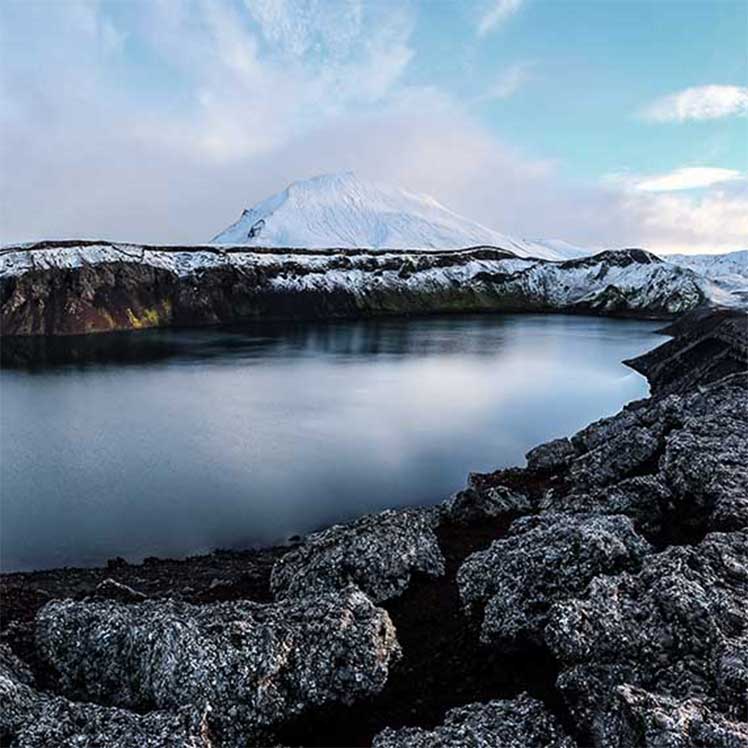
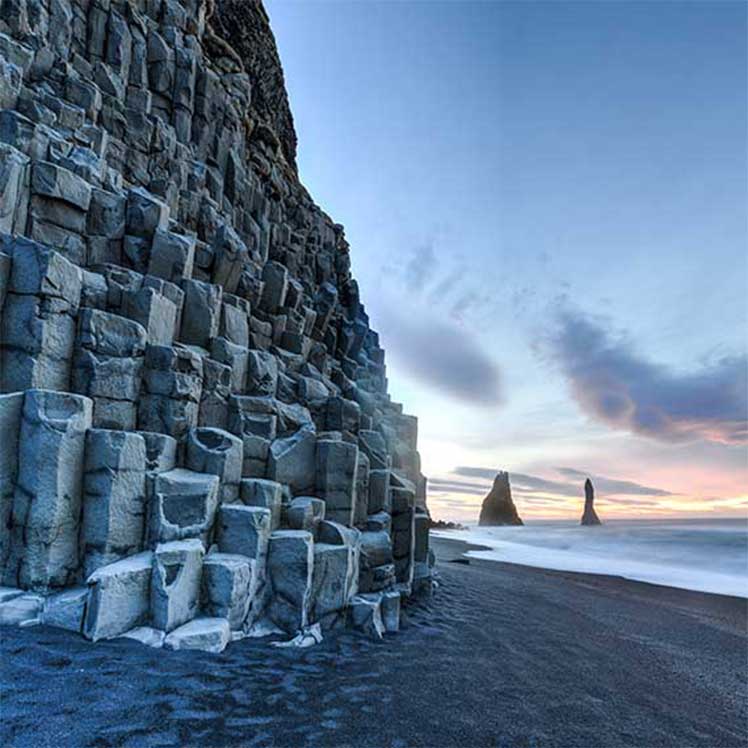
Reynisfjara Beach
Approximately 180 km southeast of Reykjavik is Reynisfjara, a black sand beach, surrounded by roaring surf, and the hexagonal basalt columns of Reynisfjall mountain.
Perpetually accosted by North-Atlantic storms, three titanic rocks which are said to be the petrified remains of careless trolls hit by sunlight, stand strong in the constant sea spray, facing only the strange dark caves which gape in the cliff-face on shore.
In walking distance is Dyrhólaey, a gigantic pillar of dark lava, arching 120 meters into the sea, forming a peninsula from which travellers can clearly see the mighty Mýrdalsjökull glacier, and enjoy sweeping views of the south Icelandic coastline.
There are regular guided tours to the beach from the neighbouring town of Vík. If travelling alone, please be advised that the sea is extremely dangerous, because of the cold water temperatures, ruthless surf, sneaker waves and heavy currents. Swimming is absolutely forbidden, and you should keep at least 20-30 metres away from the surf at all times.
The Blue Lagoon
Bláa lónið, or The Blue Lagoon, is a geothermal spa, filled with seawater, which is believed to have natural healing powers. The water, rich in silica and minerals, has worked well on all sorts of eczema and other skin related problems (e.g. psoriasis), and the Blue Lagoon even has a special clinic for skin treatment.
It also offers a variety of luxury spa treatments, and it is possible to dine at the restaurant Lava situated at the lagoon.
An experience in the Blue Lagoon is always beautiful; it has milky blue water and is surrounded by lava, making the place enchanting and mysterious.
For years the Blue Lagoon has been one of the most popular tourist attractions in Iceland. It is situated on the Reykjanes peninsula, close to the international airport in Keflavik and only forty minutes drive from the capital.
The Reykjanes peninsula is well known for its raw and rocky landscape, which many compare to the moon, and it is worthwhile to make a trip around the peninsula to visit the fisherman’s town of Grindavík.
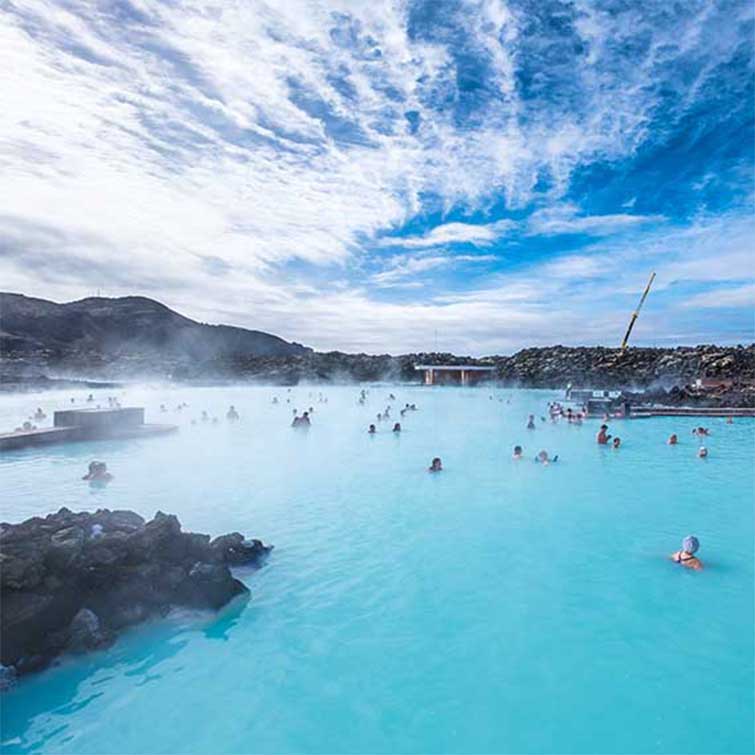
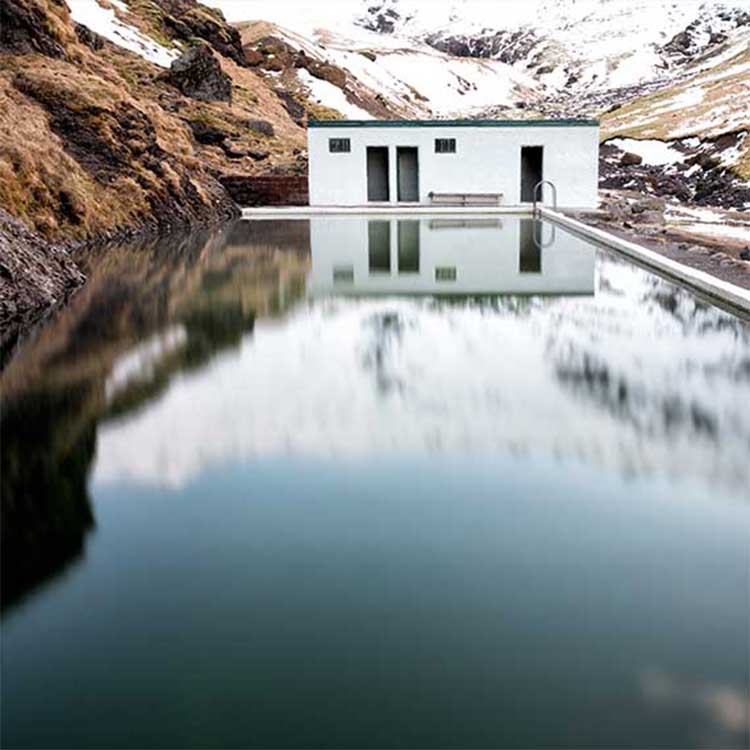
Seljavallalaug Pool
Built in 1923, Seljavallalaug, is one of the oldest outdoor swimming pools in Iceland. This unexpected architectural marvel is built into a wet hillside, at the roots of a lonely mountain, forever channeling the natural warm water that constantly gushes from the rock face that makes up one of its four sides.
This unique geothermal pool encapsulates the tranquil and beautiful side of man’s ancient dualistic contesting of nature, humbly situated in an otherwise untouched natural setting, surrounded only by bubbling brooks, and whispering streams, flowing through an ethereal landscape, seemingly in the middle of nowhere.
Seljavallalaug is reachable by foot from Seljavellir, in south Iceland. The path is undemanding and it takes about a 15-minutes to walk to the pool from the parking lot.
From Reykjavík, it takes about 2-hours to drive to the pool and the best way to get there is to rent a car and go exploring on your own. Head south on the ringroad towards Skógafoss Waterfall. Just before you reach Skógafoss, turn left onto road no 242 towards Seljavellir.
Hornstrandir Nature Reserve
Intertwined with the Sagas, and populated until the early decades of the 20th century, the northernmost part of the Westfjords is called Hornstrandir. This colossal cliffside peaks at 534 m above sea level, providing the perfect habitat for one of the greatest seafowl colonies on earth.
Due to general poverty, lack of technology, and geological isolation, communications with the outside world were, until recently, always difficult at best, making the former few inhabitants of this one horse province renowned for their distinct rituals and beliefs, especially their liberal generative attitudes towards closely related family members.
Luckily, the farms and villages have all been vacated, and nowadays an increasing number of travellers visits the area to enjoy the solitude and magnificent landscapes.
The Hornstrandir area is reachable by ferries from both Ísafjörður and the Strandir district.
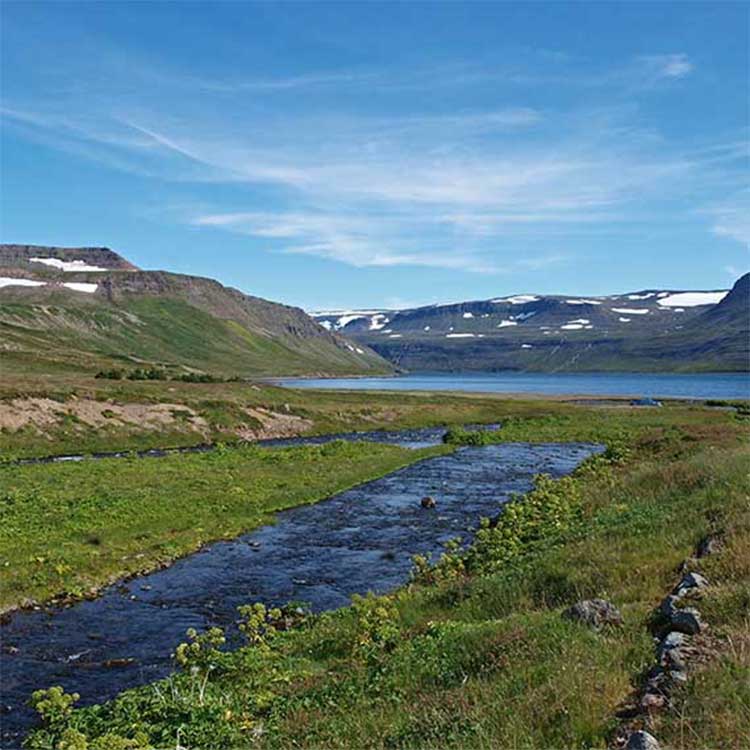
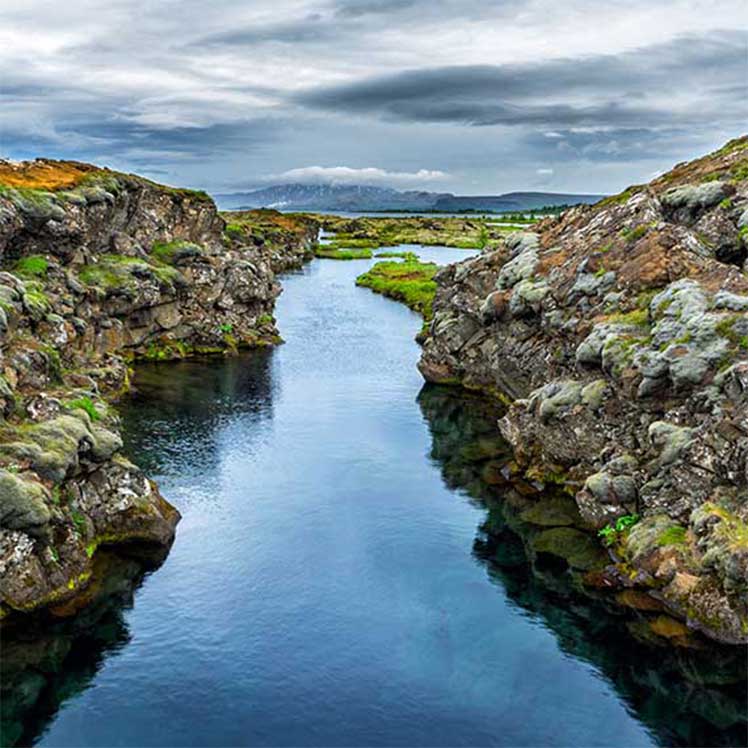
Thingvellir National Park
Þingvellir is a national park in southwest Iceland, part of the Golden Circle and just a 45-minute ride from Reykjavik; it is brimming with historical, cultural, and geological importance.
It has become one of the most popular tourist destinations in Iceland, as it is both the site of a rift valley that marks the crest of the Mid-Atlantic Ridge, and home to Þingvallavatn, the largest natural lake in Iceland, and the otherworldly Silfra diving spot – “Iceland’s best kept secret” according to many divers – located exactly on top of the cleft which separates America and Europe.
Parliament, or Alþingi, was established at Þingvellir in 930, and until 1789 it served all branches of the legislative process, making Þingvellir a priceless political forum where the poor, the sick and the righteous were banished, tried, sentenced and properly drowned in Drekkingarhylur (Drowning Pool).
